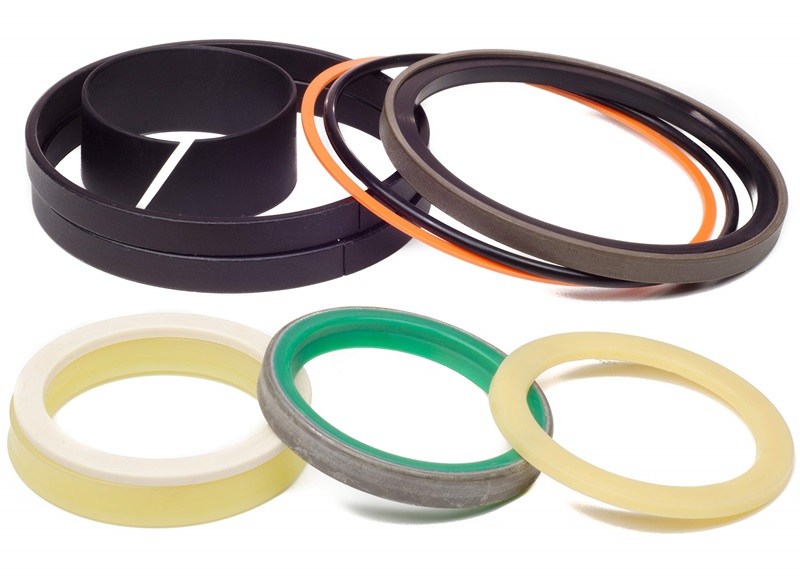In pneumatics, keeping the integrity of the system is very important for safety, dependability, and efficiency. One problem that pneumatic systems often have is air leaks, which can lower their performance, make them use more energy and raise their costs of operation. This blog post talks about how important pneumatic seals are for stopping air leaks.
It focuses on pneumatic leak detection, the pneumatic leak test process, and the role of pneumatic piston seals and air leak detectors in keeping systems running smoothly.
Understanding Pneumatic Seals
Pneumatic seals are designed to contain air within pneumatic systems, preventing leakage while allowing for the movement of parts. These seals are essential components in various applications, including cylinders, valves, and air tools. The effectiveness of a pneumatic seal depends on its material, design, and the conditions under which it operates, such as pressure, temperature, and the mechanical demands of the system.
Common Types of Pneumatic Seals
- Piston Seals: Used in cylinders to seal the piston against the cylinder bore, preventing air from escaping across the piston.
- Rod Seals: Prevent air leakage along the rod moving in and out of a cylinder.
- Wiper Seals: Protect the internal parts of pneumatic systems from external contaminants.
Choosing Pneumatic Seals
To prevent air leaks effectively, it's essential to select the right pneumatic seals for your system and maintain them properly. Consider the following when choosing seals:
- Material Compatibility: Ensure the seal material is suitable for the system's operating environment and fluid.
- Size and Fit: Select seals that fit perfectly to avoid gaps or misalignments that could lead to leaks.
- Operating Conditions: Consider the pressure, temperature, and dynamic requirements of the system.
- Life Expectancy: Assess the expected lifespan of the seal materials under normal operating conditions. High-quality seals may cost more initially but can reduce downtime and maintenance costs over time by offering a longer service life.
- Seal Design: The design of the seal can significantly impact its effectiveness. Some designs are better suited for static applications, while others are intended for dynamic uses where there is movement between parts. The right design choice will enhance seal performance and longevity.
- Chemical Compatibility: Beyond the basic material compatibility with the operating environment, ensure that the seal material is resistant to any chemicals it may come into contact with, including lubricants and cleaning agents. Chemical degradation can lead to seal failure and leaks.
- Installation Ease: Consider how easy it is to install and replace the seals. Seals that are difficult to install correctly may be prone to errors, leading to improper sealing and increased likelihood of leaks.
- Surface Finish: The surface finish of the mating parts plays a crucial role in seal effectiveness. Too rough, and the seal may wear quickly; too smooth, and the seal may not seat properly. Ensure the finish is within the recommended range for the type of seal being used.
- Environmental Factors: Consider the environmental factors such as exposure to UV light, ozone, and extreme temperatures. Some seal materials are more resistant to environmental degradation than others.
Maintaining Pneumatic Seals
To complement the careful selection of pneumatic seals, proper maintenance is crucial in extending their life and preventing air leaks:
- Regular Inspection: Schedule regular inspections of pneumatic seals as part of routine maintenance. Look for signs of wear, cracking, or other damage that could lead to leaks.
- Cleanliness: Keep the system clean, especially the areas around seals. Contamination by dirt or debris can cause premature wear and tear on seals.
- Proper Lubrication: Ensure seals are adequately lubricated to reduce friction and wear. Use lubricants that are compatible with the seal material.
- Pressure Regulation: Avoid exposing seals to pressures beyond their rated capacity. Excessive pressure can cause deformation or bursting of seals.
- Timely Replacement: Don't wait for a seal to fail completely before replacing it. Proactive replacement can prevent unexpected downtime and potential damage to the system.
Conducting a Pneumatic Leak Test
Conducting a pneumatic leak test is an important preventative maintenance practice that ensures the integrity and performance of a pneumatic system. By pressurizing the system and then observing for any pressure drops, technicians can identify even the smallest leaks, which might otherwise go unnoticed but could lead to significant energy loss and operational inefficiency over time.
This testing process can be either qualitative, simply identifying the existence of a leak, or quantitative, which involves measuring the exact rate of air loss, providing valuable data for assessing the severity of the issue and prioritizing repairs. Implementing a schedule for regular leak testing is a proactive measure that can greatly extend the service life of pneumatic equipment and enhance the overall efficiency of the system, saving time and resources in the long run.
Methods of Leak Detection
Identifying and repairing leaks in pneumatic systems is vital for preserving efficiency and minimizing waste. Maintenance of pneumatic systems involves detecting and testing for leaks, which enables pinpointing their location and severity, facilitating prompt repairs.
- Visual Inspection: Checking for signs of wear, damage, or misalignment in seals and components.
- Listening: Using the human ear or specialized acoustic detectors to hear the hiss of escaping air.
- Soap Solution: Apply a soap solution to suspect areas and look for bubbles formed by escaping air.
- Pneumatic Air Leak Detector: A more sophisticated tool that can detect ultrasonic sound frequencies produced by air leaks, pinpointing their exact location even in noisy environments.
For operational efficiency, safety, and cost-effectiveness, stopping air leaks in pneumatic devices is very important. Organizations can make sure their pneumatic systems work at their best by knowing how important pneumatic seals are, using good leak detection and testing methods, and keeping system parts in good shape. Getting a system with no leaks means spending money on good pneumatic piston seals and using air leak monitors.

